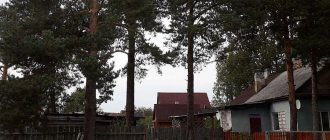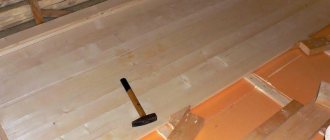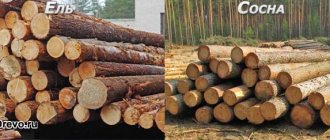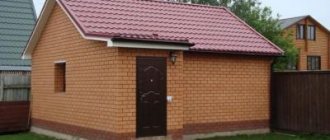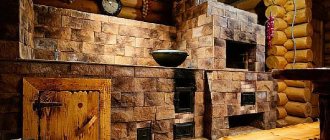A bathhouse is a healthy procedure and an opportunity to have a good time with friends and loved ones. Many of us strive to build a bathhouse on a summer cottage or personal plot. Traditionally, timber or logs were used to build a summer house. However, modern materials are confidently replacing wood. Today there are many types of building materials on the market - a variety of concrete blocks, the quality of which is not inferior to natural wood, and the cost is significantly lower. Therefore, the question arises of which blocks to use for the construction of a bathhouse in order to ensure the optimal balance between price and quality of construction.
Which blocks are best to build a bathhouse from +VIDEO
When building a bathhouse, it is traditional to use wood as the main building material.
However, recently the use of various types of blocks, which have advantages over the classical construction method, has become widespread. Previously, we already looked at what is best to build a bathhouse from, in this case we will dwell in detail on the choice of a specific type of block. In order to answer the question of which block is best to build a bathhouse from, it is necessary to consider all possible options for the block materials used.
Requirements for use
If you decide to use foam concrete or aerated concrete to build a house, then you should take into account a number of specific requirements for the use of these materials.
- The foundation must be as strong as possible, despite the fact that such block materials are light in weight and have a porous structure.
- The horizontal surface of the foundation structure must be covered with waterproofing.
- Drilling holes, cutting, and gating blocks with cells is carried out in the same way. For cutting, a hand saw is used, holes are drilled with a drill and core drills.
- Foam block materials can be laid on cement or special glue. Aerated concrete is installed only with glue.
- Stop work on the house if necessary. Preserve the object for the winter. Nothing will happen to the foam concrete walls during this time, but aerated concrete should be covered with a waterproof film.
- Make sure that the fasteners stay in place on both materials. It is advisable to use special screws, anchors and hardware.
- To cover such block facades, you need to use special plasters, lining, siding, stone and other similar materials. There are no serious restrictions.
- Sometimes it is not necessary to insulate houses made of porous blocks. If this is necessary, then you need to turn to insulation. It is recommended to use basalt wool.
- Not every plaster is suitable for finishing such block bases. For foam blocks and gas blocks, you need to purchase compounds that will maintain their vapor permeability.
cinder block
The material is a type of sand-lime brick.
Only in its composition quartz sand is replaced with porous slag, which, in turn, is heavy and low in price. The construction of a building intended for a bathhouse from this material is a quick and easy labor-intensive method. Moreover, it is the cheapest, which for many site owners is a fundamental condition when choosing the best blocks for a bathhouse.
Since cinder block is made from a variety of admixtures, obtaining a good and durable result will be achievable only if you choose a high-quality material. There are very often bad raw materials on the market. Impurities can vary in composition and properties. In order for construction to be sustainable and environmentally safe, cinder blocks should only be purchased from trusted manufacturers and in good stores (even if it costs more than on the market).
In addition to the low price, this material has other advantageous properties that indicate that these blocks are perfect for building a bathhouse:
- The most important thing is that cinder block retains heat excellently due to its high degree of porosity;
- It is low in weight and therefore easy to install;
- Has a fairly wide range of sizes;
- Fungal and mold formations do not grow on its surface;
- It is a fire-resistant building material;
- Possibility of quick construction of a building (in a few days).
Expanded clay concrete
One of a number of types of blocks suitable for building baths. True, its use also remains ambiguous, because he has one serious negative quality:
- High degree of hygroscopicity. There is almost always a lot of water in a bathhouse, so surfaces made of such material will be filled with moisture from the inside, constantly accumulating it. Because of this, when frost sets in, the expanded clay concrete will freeze through and begin to crack. The consequence could be the complete destruction of the building.
Unfortunately, the material based on expanded clay concrete is designed for only 25-50 stages of freezing and thawing. It is absolutely not suitable for frequent use in winter. In order to avoid such problems, it is also necessary to hydro- and vapor-proof it and additionally lay a layer of thermal insulation consisting of common and traditional materials. These measures will increase the service life of the building for some time.
Below you can list only positive qualities:
- High degree of thermal insulation (even higher than that of brick);
- Light weight that one person can handle;
- A completely environmentally friendly material that does not have any harmful effects on the environment.
What is better for a bath
The weight, hardness and specific strength of aerated and foam concrete are approximately equal, but there are significant differences in performance characteristics.
Operating characteristics of the blocks
| Index | Aerated concrete | Foam concrete |
| Strength distribution | uniform throughout the entire volume of the block | uneven, depends on foam distribution |
| Moisture absorption | strong | average |
| Shrinkability | up to 0.5 mm | 1–3 mm |
| Thermal insulation | high | average |
| Wall thickness for equal thermal insulation | 45–50 cm | 65 cm |
| Frost resistance | high | low |
When building a bathhouse from a foam block or aerated block, in order to save them, they are laid on edge, and the wall will be approximately 200 mm thick.
It is easy to notice that aerated concrete wins in all respects except resistance to moisture. And for a bath this is a very important factor. We recommend using aerated concrete covered with facing tiles as a material for it. This will not only solve the problem of moisture absorption, but also improve the appearance of the walls. The use of foam concrete will be justified only for small baths in regions with a mild climate.
For the construction of small buildings, aerated concrete grade D500 with a density of 0.5 t/m3 is suitable.
First you need to prepare for future construction:
- Choosing a location. It is advisable to choose a plain, if with groundwater, then deep. The flatter the terrain, the less durable the foundation will have to be built. The bathhouse should not be located next to the house, well or compost pit. The distance to the nearest tree is at least 15 meters.
- Draw up a drawing in detail. Determine the number of rooms, doors, windows, etc. for the future bathhouse.
- Coordination of the bathhouse project with administrative authorities. Without it, the bathhouse could be demolished at any moment.
- Prepare tools and materials.
Foundation
You should choose the type of foundation depending on the type of soil:
- The most common and suitable for a bathhouse is a recessed columnar one. It is versatile and easy to build.
- For uneven terrain, a pile column foundation is suitable. It is cheap and also easy to maintain.
- Another foundation for unreliable soil is a welded metal one. It has high strength and an equally high price.
- Plate. Also for subsiding soil or for structures of large mass.
- A shallow foundation is easy to build and cheap. Among the disadvantages is the impossibility of using it on unstable soil.
It is very important to choose the right foundation - without it, no construction will begin.
Building walls
Phased construction of walls:
- The foundation must be leveled with a special solution. This is done for better laying of the material.
- Next, corner blocks are installed and a rope is pulled over them.
- The first row of blocks is laid out on mortar or glue. If foam blocks are used, they can be held on with regular mortar, but for a better effect, glue made from cement mortar should be used. Its layer should be small - approximately 2-3 mm. Thick layers of solution will allow heat to pass through.
- Apply the solution to the first row, then lay out the next one and so on.
Important! Reinforcement should be done every 3-4 rows. When reinforcing, you need to pay attention to the walls between rooms: weak blocks are chosen for them, and they need to be strengthened.
Before reinforcement there must be a sand cushion - at least 15 cm.
Gas silicate
Gas silicate building blocks are used both for the construction of low buildings and as insulation. In both cases, D500 grade material is suitable. Its main characteristics:
- not flammable;
- resistant to rotting;
- not subject to fungal attack.
The basis for the gas silicate should be a strip foundation. A movable one will not work, since the blocks may become deformed when the ground moves.
Another condition is a waterproofed base, rising 50 cm above the ground, which will not allow porous building blocks to collapse during seasonal temperature changes.
To preserve heat, the masonry is fixed with a special adhesive solution. Strength is enhanced with reinforcing mesh or metal rods. For wind resistance, a monolithic belt with anchors is installed under the roof.
To make the blocks last longer, the bathhouse box is lined with waterproofing on the outside and thermally insulated on the inside. For finishing, mineral plaster for aerated concrete is used.
Mold and mildew in the bathhouse
The “weak point” of wood is that it is susceptible to rotting and the appearance of fungus, even after treatment with protective compounds. Finding good construction wood is extremely difficult, especially in the Urals. Our region is rich in forests, but the quality of local wood is not suitable for the production of building materials. In addition, the wood is often not dried as necessary.
Twinblock does not contain organic substances, so walls made from it are not subject to the destructive effects of microorganisms. This is a guaranteed high-quality, certified material that provides predictable results. If the construction technology is followed (more on this below), a bathhouse made of aerated concrete will last for decades and will not become moldy or rot.
Manufacturing of gas blocks
The methods for producing aerated concrete and gas silicate are similar. They consist of mixing ingredients, molding and hardening. The only difference is in the binding components.
| Components | Aerated concrete | Gas silicate |
| Sand, water | + | + |
| Lime | + | — |
| Metallic aluminum | — | + |
| Cement | + | + |
The table shows that lime is a gas-forming agent for aerated concrete, and aluminum powder is a gas-forming agent for silicate block.
All components of aerated blocks must be crushed as much as possible. The smaller the particles, the stronger the concrete.
As mentioned above, blocks are autoclaved and non-autoclaved. The goal of the autoclave method is to quickly gain strength and save time for hardening. If we talk about foam concrete, it also saves cement.
After autoclave treatment, the monolith is cut with a special string into blocks of the required size. Place on pallets and leave for 28 days to dry completely. After this, the blocks are ready for construction.
How to choose the location of the bathhouse on the site
To build a bathhouse from aerated blocks with your own hands, you need to study the recommendations of construction experts. It is recommended to select a location and develop a design during the planning stage.
The septic tank is installed at a distance of 15 meters from the well according to SNiP. A shaded area close to the reservoir is allocated for an autonomous sewerage system.
Order a standard project from specialists or create it yourself. The first option will allow you to make a rational calculation of the dimensions, the depth of the foundation and the decoupling of communications. Architects will also create an estimate for construction materials.
Do-it-yourself aerated concrete baths belong to the budget class. Nevertheless, the structures perform their intended function efficiently. At the same time, design solutions for the exterior and interior are not limited.
Foundation
There is no need to build too strong a foundation for such a building.
This is possible due to the light weight of the material used. Due to this property, the construction of a strip foundation is permissible. It is used in conjunction with a sand base. This substrate will need to be waterproofed using bituminous materials. To build such a foundation, it is necessary to dig a hole in the shape of ribbons along the entire perimeter of the building. Their height should be 600 mm and thickness 300 mm. After completing the pit, it is worth making markings. This is done using a building level. Next, special rods are installed around the perimeter, at a distance of approximately 2 meters. In order to do everything as accurately as possible, it is recommended to use a cord. By tensioning the cord, the correct installation of the rods is checked.
Cinder block baths
Made from various admixtures, cinder block is used in buildings that bear heavy loads. These are inexpensive buildings that are durable. With proper insulation, they are not inferior to wooden ones. If you decide to build a bathhouse from cinder blocks, you can save a lot of money by getting a budget but high-quality structure. But, before making a choice, it is worth familiarizing yourself with the characteristics of the future steam room.
The advantages of the building include:
- high construction speed;
- fire resistance;
- mold does not form;
- high heat resistance;
- duration of operation.
The cinder block steam room has its disadvantages:
- due to its unaesthetic appearance, it requires external finishing;
- Difficulty with communication.
Having become familiar with the performance qualities of such buildings, build a bathhouse from cinder block or
no, everyone decides for themselves.
Production
At the initial stage, the components included in the composition are measured according to the required quantity and mixed in a special mixer. The resulting mixture is poured into the mold and left to acquire initial setting. Based on the method of acquiring strength, blocks are divided into the following types:
- Autoclaved. Hardening is facilitated by high pressure with the addition of steam.
- Non-autoclaved. The material hardens in natural conditions. It is possible to use steam or electrical heating, but the pressure does not increase.
Aerated concrete blocks belong to the first type. The strength of autoclaved material is much higher, having gained strength under natural conditions. The autoclave method is used only in factory conditions. To create porosity, aluminum paste is used. The interaction of aluminum and water leads to an increase in mass volume. After preliminary setting, the raw material is cut into equal gas blocks with a special tool. The building material is placed in an autoclave, where the effects of pressure, temperature, and steam finally add strength to aerated concrete.
How to build a bathhouse from blocks - building walls
Building a box is a responsible operation that you can handle yourself:
- Check the horizontalness of the base.
- Place corner blocks.
- Stretch the cord and lay the first row on the cement mortar.
- Use a wall chaser to make a groove for the reinforcement.
- Remove debris and place steel bars.
- Prepare the adhesive composition and apply to the surface.
- Lay the next level of masonry.
Carry out installation by making reinforcement at intervals of 4 rows. Install the Mauerlat to secure the roof structure.
Technology for the production of foam compositions
A distinctive feature of production is the ability to carry out activities directly on the construction site, which eliminates the need for transportation. Manufacturing proceeds as follows:
Laying features also affect some parameters that can be compared: gas blocks are placed on glue, and foam blocks are placed on cheaper cement mortar
- sand is poured into the concrete mixer, cement is gradually added;
- the components are mixed evenly until smooth;
- the required amount of water is added;
- the components are remixed;
- in parallel, foam is prepared in the foam generator;
- foam is introduced into the concrete composition;
- the resulting mass is mixed and poured into molds.
The products are sent to a warehouse, where they settle and acquire operational characteristics for 28 days. The process is simple, does not require the use of complex equipment, everything depends solely on maintaining proportions.
High-density blocks are recommended for use in the manufacture of frames and load-bearing walls
Popular materials for bath construction
Let's start looking at materials for construction. Wood remains traditional. If previously only logs cleared of bark were used, now mostly timber is used. The construction of frame baths became widespread.
For their construction, wood is used in combination with other materials. Burnt brick is also popular. Relatively recently, materials such as cinder blocks, aerated concrete, expanded clay concrete, foam blocks, and wood concrete-based baths began to be used.
There is a fairly large selection of materials, and each has both advantages and disadvantages. Knowing this will allow you to choose the material that is most suitable for you and see the pitfalls before construction begins.
Let's take a closer look at each of the materials.
Tree
Since ancient times, wood has proven itself to be a good material for building baths, since it has suitable properties for this.
Let's define the advantages.
- Vapor permeability. Wood walls allow air to pass through well, so moisture does not stay in the room, and there is no need for additional ventilation.
- Low thermal conductivity. The heated air in a wooden bath lasts for a long time, even at low temperatures outside. This allows you to save on energy consumption.
- Wood is a natural material, which has a beneficial effect on the microclimate.
- Withstands temperature changes well.
- Natural beauty of wood structure.
What are the disadvantages of this material it is important to know about.
- Over time, natural shrinkage of the structure occurs. For this reason, only after six months can you begin interior decoration.
- Wood requires maintenance. Without timely treatment with antiseptic solutions and paint and varnish compositions, under the influence of the environment, the appearance is lost.
- Certain types of wood swell from moisture, which leads to further destruction of the structure of the material, especially at low temperatures.
Pine is often used for construction. If the wood has not undergone special treatment, resin streaks appear, which spoil the appearance and can cause burns. This is important to consider if the choice fell on softwood materials for interior decoration.
Brick
For bath buildings, red brick is most often used. This material is distinguished by its environmental friendliness and is made from clay. Brick is used for laying walls and foundations, and is also used for laying stoves and chimneys.
Brick
A well-known and familiar building material.
Advantages:
- Durability. The service life of brick buildings is up to 150 years;
- Beautiful appearance, creating the effect of solidity and solid construction of the building;
- When choosing a facing material, you don’t have to additionally decorate the surface of the walls;
- Has good thermal insulation qualities;
- The ability to give the bath a variety of shapes and sizes.
Unfortunately, even this material has its drawbacks:
- Large heat capacity, which will make the heating time longer;
- High degree of steam conductivity. In a brick bathhouse, it is imperative to install a ventilation system and lay a vapor barrier layer. Otherwise, the walls will become damp.
- The material is very expensive, so not everyone can afford it.
And so, to summarize, it’s still up to you to decide what is best to build a bathhouse from. There are currently several types of building blocks on the market that are well suited for building bathhouses. All of them have a number of advantages and disadvantages, which must be carefully weighed and, based on the findings, possibilities and desired results, choose the most suitable material.
We build a bathhouse from foam blocks on the site with our own hands
If you decide to build it yourself, you should take into account the sequence and all the subtleties of constructing a bathhouse from this material. Below we will consider in detail the entire sequence of stage-by-stage construction of a bathhouse.
We are building a foundation for a bathhouse from foam blocks
Any construction begins with a foundation. The light weight of foam concrete allows the use of a lightweight base for a bathhouse. A suitable option would be a strip foundation with mandatory work to protect it from moisture.
To install the stove you will need an additional foundation. You can read more about how to pour a strip foundation for a bathhouse here.
At this stage, it is imperative to take care of draining future wastewater. For drainage, a sewerage system is laid with the installation of a drainage well, or a drainage pit is constructed.
Here it is written how to make your own molds for making cinder blocks at home.
The better to sheathe
The bathhouse is lined inside and out, but not always. Sheathing or finishing is vital for the frame and concrete; interior is necessary for brick. Log houses may only need caulking and prevention of cracking with oil, for example, but sometimes they are also insulated and lined from the inside with clapboard (usually not because of a good life). See the section on bath finishing materials.
The inside of the bathhouse is finished in the vast majority of cases with clapboard or regular boards (edged or unedged). So there is only one contender for the title of “best material for a bathhouse” - wood. And we are confident that you will agree with us. Although there are options, more about them here.
- Practical interior and exterior decoration of a bathhouse made of foam blocks. How to finish it so that the eye is pleased?
- Finishing with unedged boards in the bathhouse
- Let's figure out how to line a bathhouse with clapboard
- All about covering a steam room: what kind of lining, how to properly cover a steam room in a bathhouse
But with insulation, it’s not so simple.
What insulation to use
Insulation materials come in the form of sheets, rolls or bulk. The first include expanded polystyrene (foam plastic, Penoplex), mineral wool, foamed polyethylene with or without foil, etc. Bulk materials are expanded clay, vermiculite, perlite, ecowool.
Bulk ones are easier to use for floors, but they can also be used for insulating walls. In this case, the bulk material needs voids into which it is poured or blown under pressure. Ecowool has the ability to be applied to the wall while wet.
Sheets and rolls are also used for walls and ceilings.
As for the best, we will say this: it is advisable to use expanded polystyrene in a bathhouse only for insulating the floors of the first floor. They are flammable, harmful and undesirable. However, they are also suitable outside the steam room. But in the steam room this is taboo.
Bulk ones are good for floors, this has already been said.
Basalt wool for baths
In general, we have thought about mineral wool more than once and eventually came to the conclusion that, despite all its shortcomings, it is still the optimal material for insulating a bathhouse. Its disadvantages are known: it becomes saturated with moisture and ceases to insulate, therefore it needs steam and waterproofing (we have written a lot about them, enter these words at the very top of the page in the site search, you will find a lot of materials).
Here we did not take a vote, since different structural parts of the bathhouse (foundation, floor, walls, ceiling, roof) have different requirements for insulation. We recommend that you familiarize yourself with our materials on this topic:
- Basalt insulation for a bath or natural? What insulation for a bath is better? Review of the most popular
- Which insulation to choose for a bathhouse on the inside walls: with or without foil? And is it even needed inside the bathhouse?
- Are we installing a log house or timber? Interventional insulation for a bathhouse: which one to choose, which is better, natural or modern?
- Should I insulate the bathhouse ceiling with clay and sawdust or sawdust and cement? Which is better and is there a difference?
- Let's look at it in detail: how to insulate a steam room in a bathhouse
- Insulating the walls of a frame bath: the right “pie”
- Choosing which insulation to use for a bath in a steam room: so that the steam room is hot and environmentally friendly
- We insulate a bathhouse from inside blocks: foam blocks, expanded clay concrete, cinder blocks, gas silicate. What do they have in common and what are the differences?
- About insulating a bathhouse under the lining
- How to insulate a bathhouse from foam blocks: inside and out. Don't let the walls crumble
Exterior finishing
The outside of the bathhouse can be finished in different ways depending on the original wall material. If it is concrete, then you can plaster it. The same goes for brick, but it is usually left “as is”.
You can make siding - this is a broad concept that also includes wood trim, for example, “American” clapboard, which, in general, gave rise to all sidings. The tree can be either an ordinary board, which is sewn in a herringbone pattern, or a plank, which is sewn onto the frame.
In addition, there are sidings made of vinyl and metal, cement, imitating stone and wood. In general, there are many options for covering a bathhouse.
But we believe that metal siding for a bathhouse is unnecessary.
High-quality plastic will not be cheap, although truly high-quality material has such characteristics that it can last for many years. But the bathhouse is a risky structure, and the plastic burns and releases poisons.
As for cement siding, think for yourself. From the set of options for what material is best to cover a bathhouse, this one does not seem very successful. Maybe the basement one - for covering the foundation.
So we vote for wood paneling. What will you vote for?
Loading …
Objective conclusions
Considering the characteristics of the material, the following can be revealed:
- both the gas block and the foam block require a solid foundation;
- according to most characteristics, autoclaved aerated concrete and factory foam concrete are practically not inferior to each other;
- with equal density, the strength of aerated concrete is slightly higher, which justifies its use in the construction of load-bearing walls, although for experienced builders, monolithic foam concrete can be an alternative;
- the costs of constructing an object using foam concrete are somewhat lower, although this is not a critical indicator;
- foam concrete will have to be insulated, and aerated concrete requires the installation of ventilated facades;
- the craftsman should take into account the construction conditions and, based on this, choose the material.
Aerated concrete or gas silicate - why they are confused with each other
These two types of blocks belong to cellular or lightweight concrete. Based on their scope of application and similar properties, they are often confused with each other. Both materials are very similar in structure, so not every specialist will be able to immediately distinguish them, not to mention ordinary people. Often this is also the fault of the manager, who positions the material under the general name of aerated concrete, without highlighting the differences.
Therefore, most buyers believe that different names are designations of the same material.
Developers make a huge mistake when they turn to private teams or migrants. These categories have a superficial knowledge of aerated concrete and aerated silicate and what the difference is between them.
General characteristics include:
- light in weight;
- porous structure;
- geometrically even shape, convenient for construction;
- low cost;
- qualitative indicators.
This is due to the fact that active propaganda and advertising purposefully paves the way for materials to construction projects at all levels: from one-story houses to multi-story construction.


